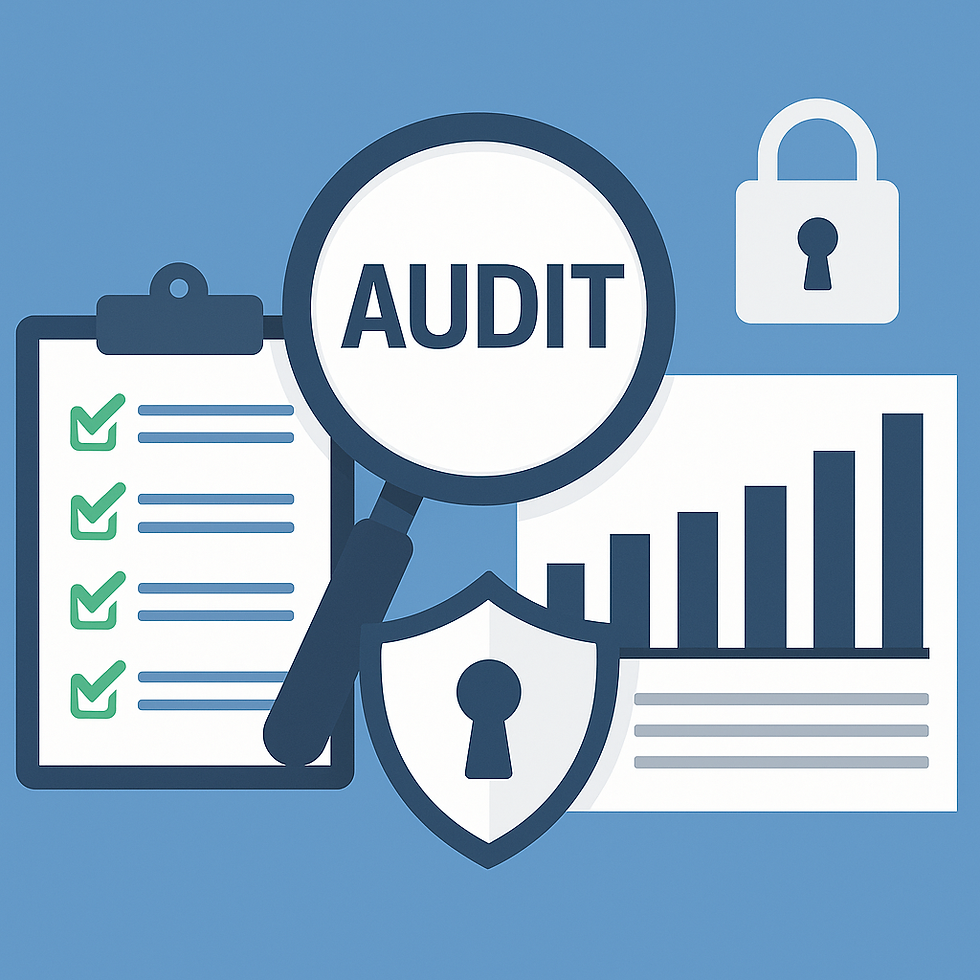Financial Transparency and Audit with SAP FI
- Oznur Ozen

- Aug 29
- 2 min read

Introduction
In today’s business world, it is not enough for companies to simply produce financial statements; these reports must also comply with the principles of accuracy, transparency, and auditability. With increasing regulatory pressures, IFRS and local accounting standards, and the digitalization of tax authority processes (e-Ledger, SAF-T, e-Invoice), organizations are driven towards stronger reporting and audit infrastructures.SAP’s Financial Accounting (FI) module plays a central role in this context, serving as a foundation for both transparent reporting and preparation for internal and external audits.
Financial Transparency: The Contribution Of SAP FI a-) Centralized Data Structure
SAP FI manages accounting records through a single integrated database. Data from vendors, customers, banks, inventories, and fixed assets are consolidated into one ledger. As a result:- Duplicate postings are minimized,- Inconsistencies in reporting are eliminated,- A Single Source of Truth is established for management, investors, and auditors.
b-) Real-Time Reporting
With the S/4HANA architecture, the Universal Journal (ACDOCA) combines all financial data into a single table. This enables:- Real-time profit and loss analysis,- Costing and profitability reporting,- Parallel reporting under IFRS and local GAAP.
c-) Digital Compliance and e-Ledger
In Turkey, legal obligations such as e-Ledger and e-Invoice, mandated by the Revenue Administration, can be seamlessly managed within SAP FI. For global clients, SAF-T (Standard Audit File for Tax) compliance ensures alignment with requirements in countries such as Norway, Poland, and Romania.
Audit Dimension: Compliance And Control With SAP FI

a-) Authorizations and Roles
One of the most critical aspects of auditing is ensuring that users only access data relevant to their responsibilities. In SAP FI:- Segregation of Duties (SoD) analysis can be performed,- User activities can be monitored through ST03N, SUIM, or GRC tools,- Thus reducing the risk of fraud and irregularities.
b-) Logging and Traceability
Every financial transaction in SAP FI is recorded with document number, user information, date, and time.- Change Logs allow tracking of modifications in documents,- This provides complete transparency for auditors.
c-) Audit Reports
The FI module offers ready-to-use reports for auditors:- FBL3N: General ledger line items,- FBL5N: Customer account statements,- FBL1N: Vendor account statements,- FAGLL03: General ledger detail reports.Additionally, the Document Splitting functionality allows financial statements to be broken down by segment, business unit, or branch.
Advanced Practices To Enhance Transparency

- SAP Audit Management: Integrated solution to plan, document, and report internal audit processes.- SAP GRC (Governance, Risk, and Compliance): Manages risk, compliance, and user authorization analysis.- Machine Learning & Artificial Intelligence: Enables fraud detection and anomaly analysis on SAP FI data.
Conclusion
Financial transparency and auditability are no longer only about regulatory compliance, but also about protecting corporate reputation and ensuring investor confidence. With its robust data structure, real-time reporting capabilities, and audit-friendly features, SAP FI stands out as one of the strongest tools to meet these needs.
In conclusion, SAP FI is not just a financial module for bookkeeping; it serves as the backbone of corporate transparency and audit compliance.









Comments